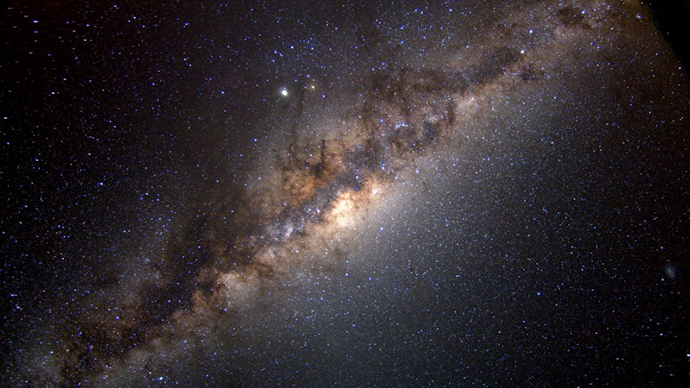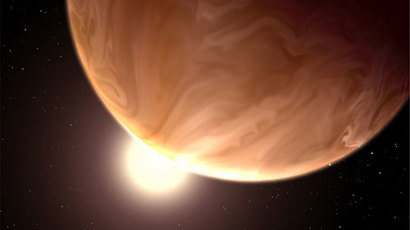Newly-discovered ‘hypervelocity stars’ flee our galaxy

Astronomers have discovered dozens of solitary stars that move fast enough to escape the gravitational grasp of the Milky Way galaxy. The stars travel at over 1.5 million kilometers per hour, but scientists have no idea what force drives them.
"These new hypervelocity stars are very different from the ones that have been discovered previously,” said Vanderbilt University graduate student Lauren Palladino, lead author of the study.
“The original hypervelocity stars are large blue stars and appear to have originated from the galactic center. Our new stars are relatively small – about the size of the sun – and the surprising part is that none of them appear to come from the galactic core,” the scientist added, according to the research’s press release.
Palladino works under the supervision of Kelly Holley-Bockelmann, assistant professor of astronomy at Vanderbilt University, who said that the phenomenon of stars fleeing the galaxy is very rare.
“It’s very hard to kick a star out of the galaxy,” said Holley-Bockelmann.
“The most commonly accepted mechanism for doing so involves interacting with the supermassive black hole at the galactic core. That means when you trace the star back to its birthplace, it comes from the center of our galaxy. None of these hypervelocity stars come from the center, which implies that there is an unexpected new class of hypervelocity star, one with a different ejection mechanism,” the scientist also stressed.
The discovery of this new set of “hypervelocity” stars was described at the annual meeting of the American Astronomical Society in Washington DC. It was also published in the Jan-1 issue of the Astrophysical Journal. Australian, Spanish and Mexican specialists also contributed to the study.
It should be noted that the Milky Way’s central black hole has a mass equivalent to four million suns, which produce a gravitational force strong enough to accelerate stars to hyper velocities.

The previously described effect involved binary pairs of stars that get caught in the black hole’s gravitational grip.
The pair is sucked in by the hole; while one of the stars spirals towards the core, the other one receives a huge kick and is thrown out of the galaxy.
18 giant blue hypervelocity stars have been found to have undergone this process.
They are called HVSs and were first described by Los Alamos National Laboratory scientist, Dr. Jack Hills, in 1988.
The hypervelocity stars’ existence was confirmed 17 years later, when Smithsonian astronomers found the first outcast star. Two more hypervelocity stars were found in 2006. In 2010, astronomers using NASA's Hubble Space Telescope reported detecting HE 0437-5439 - a hypervelocity star that had sped away from the galaxy at a speed of 2.5 million kilometers an hour.
Now, the latest study by Palladino and her colleagues has discovered 20 more stars that can be categorized as the new type of “hypervelocity stars.”
Palladino explained that the study was underpinned by highly precise calculations.
“One caveat concerns the known errors in measuring stellar motions. To get the speed of a star, you have to measure the position really accurately over decades. If the position is measured badly a few times over that long time interval, it can seem to move a lot faster than it really does. We did several statistical tests to increase the accuracy of our estimates. So we think that, although some of our candidates may be flukes, the majority are real.”
The mystery, however, remains: how do stars do that? The scientists say they are working to solve the conundrum.
















